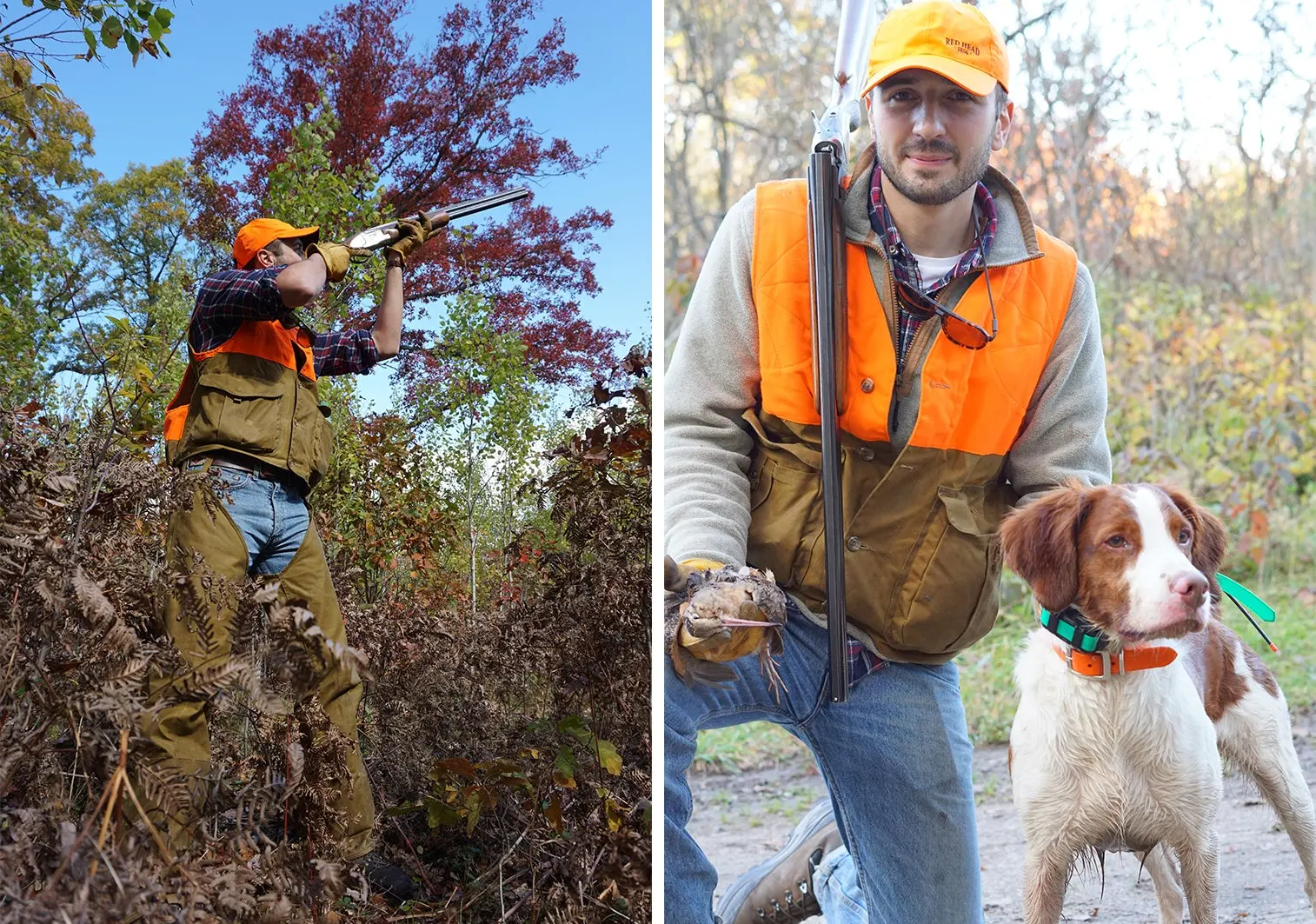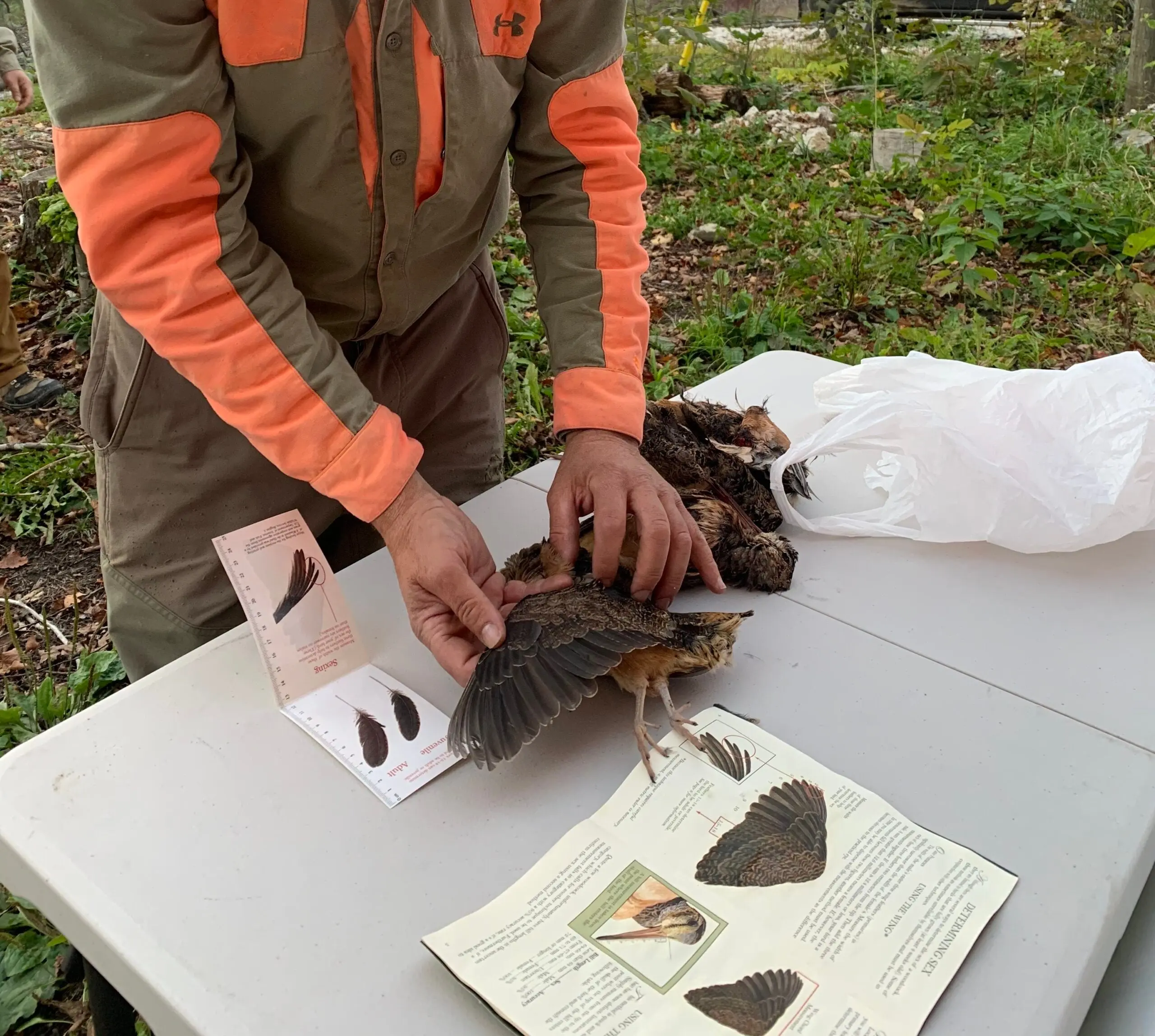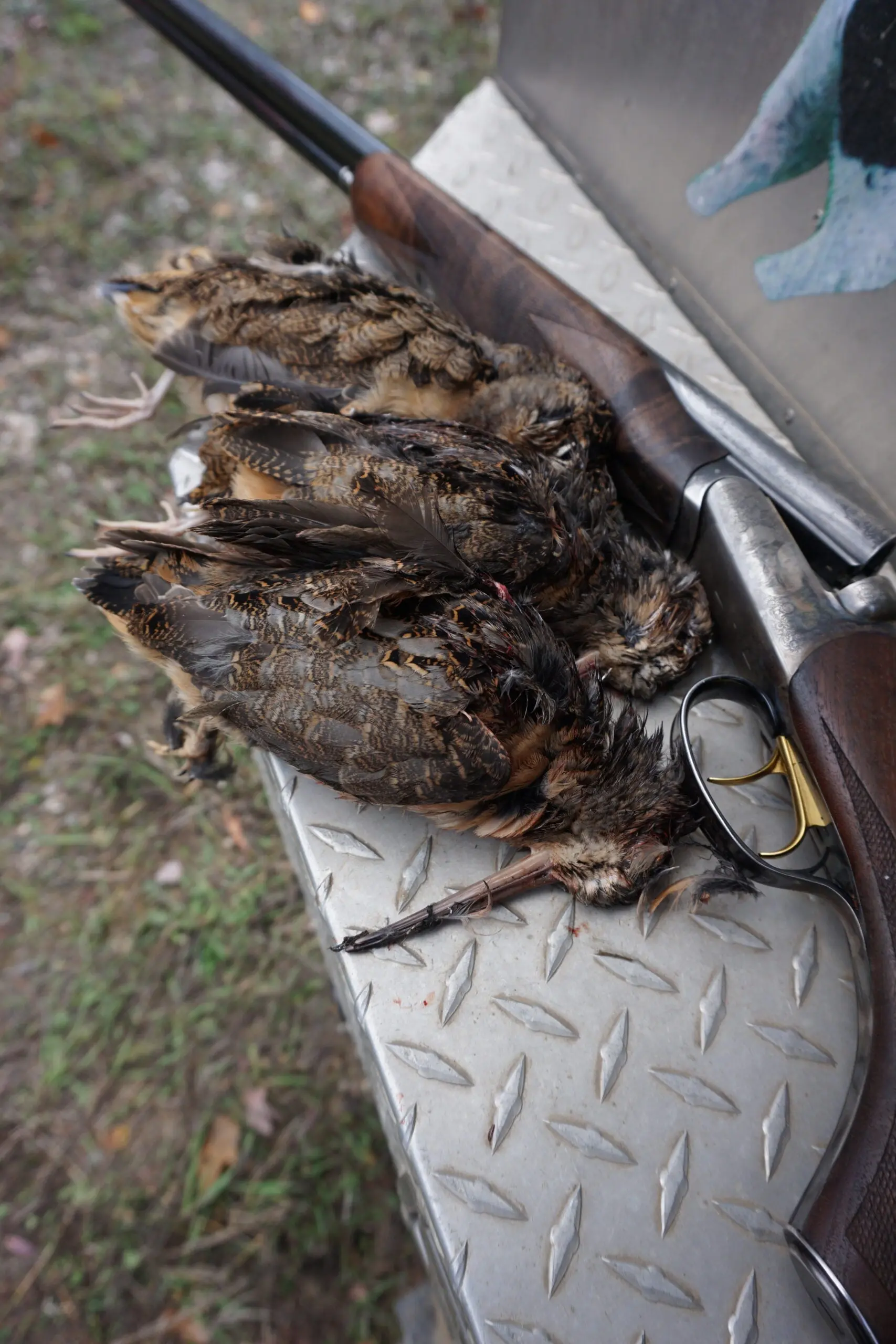_We may earn revenue from the products available on this page and participate in affiliate programs. Learn more ›
_
Woodcock may be the strangest North American upland bird. They have upside-down brains, eyes on the backs of their heads, long probing beaks, red breast meat, and white leg meat. Their nicknames—timberdoodle, bog sucker, Labrador twister—are about as silly-sounding as the birds are goofy-looking. And yet woodcock are among the country’s most popular upland birds, absolutely revered by a contingent of dedicated devotees. As migratory birds, woodcock will seem to magically appear in a cover and be gone as suddenly as the came, as if to make sue no one takes them for granted. On a tough day of grouse hunting, timberdoodles can help fill out a bag limit. In the spring, they put on a beautiful mating display. And during the fall, these small, fragile birds make an incredible journey south, stopping along the way to briefly grace your favorite upland haunts. Here’s everything you need to know about the American Woodcock and know to hunt them.
Overview
The woodcock is a shorebird without a shore. Only a little bigger than a robin, these bird’s are related to other shorebirds like the Wilson’s snipe
. Like other shorebirds, they use their long bills to probe for food, such as earthworms. But instead of beaches and saltwater marshes, woodcock are found where boggy, muddy areas meet with dense cover and young forests. The edges of beaver ponds and meandering lowland seeps are hotspots. Woodcock can also be found mixed in with ruffed grouse in aspen stands and thickets of dogwood and hawthorn.

The author, hunting woodcock in Maine. Matthew Every
In the early fall, woodcock migrate from northern forests to woods throughout the south. Lousiana, for example, offers exceptional late-season hunting. The birds can also be found year-round as far south as northern Florida. Their range extends from the eastern edge of the Dakotas and mid-Texas to the East coast. In the spring, during mating season, male woodcock can be heard in the evening making a nasally peent call and seen giving elaborate aerial displays to attract females. Females nest on the ground—their brown, leaf-like plumage giving them the perfect camouflage.
Table of Contents
Lifespan
Aging and Sexing
The Spring Courtship Display
Woodcock Hunting
Best Guns and Shot Sizes
How to Cook a Woodcock
Lifespan
The oldest woodcock on record was shot in Wisconsin in 1982. It was just over 11 years old. Typically, the birds live to an average of 1.8 years. Females nest on the ground and will produce a brood of one to three birds and sometimes up to five. During their first week of life, woodcock hatchlings depend on their mothers for food. After that, they will forage on their own. At two weeks, young woodcock can make short flights, and at five weeks, they are completely independent.
Aging and Sexing

There are many guidebooks to help you determine the age and sex of the woodcock you shoot. Matthew Every
Male and female woodcock plumage matches leaf litter on the forest floor to disguise the birds from predators. It rare to see a one before it’s flushed. Female woodcock are about an ounce heavier than males at 7.6 ounces on average. All woodcock can be aged and sexed by looking at the characteristics of the wing. The last three primary wing feathers of a male will be narrower than those of a female. You can also determine sex by putting a dollar bill in the bill of a woodcock. Male bills will not extend past the edge of the dollar, while female bills will extend to the edge or beyond.
You can determine the age of a these birds by looking at its primary wing feathers. Younger woodcock will have bright, buffy tips to their wing feathers that contrast with the darker color of the primary feathers. Older ones have less or no light-colored tips to their wings. The primary feathers on older woodcock are also less symmetrical than those on younger birds, with one wider edge on the outside of the rachis, or centerline. All woodcock have white-tipped tail feathers that they will fan out and display toward a predator. Some say these are meant to mimic the teeth of a larger animal.
Spring Courtship Display
Any turkey hunter out to roost birds in the spring has probably heard a woodcock. The males start their courtship display from the ground in clear areas calling with a buzzy peent call that might be mistaken for the sound of a bug. The males then fly directly upwards in a spiral over 300 feet in the air. At the apex of their flight, they start to twitter their wings intermittently and descend. On their way down, they look for a female and zig-zag towards her on the ground. Once the male and female are together, the male will continue calling and strut and dance on the ground to seal the deal.
The woodcock’s spring courtship display is one of the most spectacular you can hope to witness in the outdoors, and it’s not difficult to get a front-row seat of the proceeding from February all the way into June in parts of their range. (If you want to know how, we have an entire article on how to view the woodcock’s courtship display here
.)
Woodcock Hunting

A successful day of woodcock hunting. Matthew Every
You can hunt woodcock the same way you hunt ruffed grouse. In fact, many grouse hunters will take timberdoodles while hunting for grouse in the early fall and winter in the south. Most upland hunters use pointing dogs to find woodcock before flushing them and taking a shot. Those without a dog can find them by walking the edges of swamps in thick young forests or any areas that offer good grouse cover.
Because woodcock eat mostly earthworms, you should look for them near moist soil and muddy areas. Beaver ponds with brushy cover offer good hunting, as do overgrown farm fields, old apple orchards, and young forests near water. Look for areas where trees are no thicker than your wrist. Woodcock season can run from late September through February depending on where you hunt. Though you may find the occasional woodcock throughout the birds’ range, hunting is generally better in the early fall in the north and during the late season in the south.
If you can catch the migration just right, you’ll have a day full of flushes. Shots at woodcock can be challenging in thick brush, but woodcock are easier to hit than a grouse and will hold steady for a pointing dog. Posting hunters at the edges of thick cover can be a good strategy, as a woodcock will usually flush directly upwards to clear the canopy before taking off. If you miss your shot, pay attention and watch where the bird lands. Woodcock don’t fly very far when flushed, and it isn’t uncommon to get a second chance at the same bird.
Best Shotguns and Shot Sizes
The best grouse hunting shotguns
will do well for woodcock hunting, too. Because of the dense cover these birds inhabit, you should choose a shotgun that’s light enough to hold with one hand while fending off brush with the other. Shorter 26-inch barrels are also good, as they’re less likely to get caught on brush. It’s rare that you’ll get a crossing shot at a woodcock, so you don’t necessarily need a shotgun that swings well.
As for gauge, woodcock hunters shoot everything from 12-gauge down to 28-gauge guns. Even though woodcock are migratory birds, most states do not require you to use non-toxic shot. If you’re shooting a 12-gauge, go for a low-brass load with shot sizes from #8 and #6. For a choke, go no tighter than Modified and err on the side of a wider choke—Improved being the ideal constriction. Shot opportunities at woodcock are often short, so plan to shoot fast through the brush instead of waiting for an open shot.
Read Next: How to Bag a Limit of Woodcock Without a Dog
How to Cook a Woodcock
It’s tempting to breast out a bird as small as a woodcock, but you’d be missing out if you did. Woodcock legs have white meat because the birds spend more time flying than walking. Their breast meat is red, similar to a dove, but they have more fat on them than other upland birds. Woodcock are best plucked and cooked with the skin on to hold in the fat. Spatch-cock them and fry each half in a cast iron, or grill whole birds over medium to high heat—so the skin crisps up and the meat does not get overcooked.
If you’re feeling really ambitious, you can spit-roast woodcock over an open fire. Sewer the whole birds and fix them in place with wire. Then turn in front of the flames and try to collect the drippings. Two woodcock per person is enough for a meal, but three per person is best. Keep things simple with salt and pepper for seasoning, and you won’t be disappointed.






